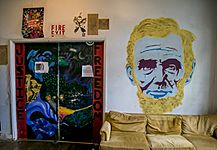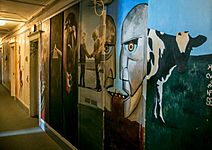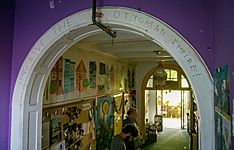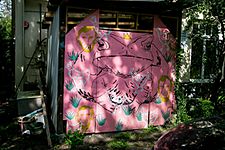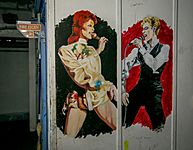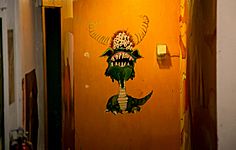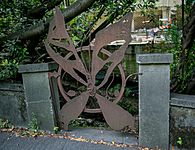Kingman Hall facts for kids
Quick facts for kids Kingman Hall |
|
|---|---|
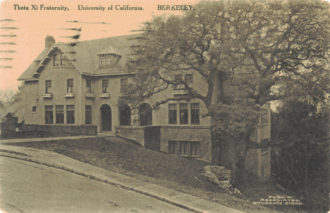 |
|
| General information | |
| Location | 1730 La Loma Avenue, Berkeley, California |
| Coordinates | 37°52′37″N 122°15′27″W / 37.87694°N 122.25750°W |
| Completed | 1914 |
| Design and construction | |
| Architect | Charles W. Drysdale and Harry A. Thomsen, Jr |
|
Berkeley Landmark
|
|
| Designated: | January 4, 1999 |
| Reference #: | 214 |
| Housing | |
|---|---|
| Status | Proposed |
| Category | Student housing cooperative |
| Population (2020) | 50 residents |
| Units | 11 Singles - 18 Doubles - 1 Triple |
| Governing Body |
Berkeley Student Cooperative |
Kingman Hall is a special building located at 1730 La Loma Avenue in Berkeley, California. It's very close to the University of California, Berkeley campus. This building is part of the Berkeley Student Cooperative, which is a group that helps students find affordable places to live. About 50 students live here, and they are sometimes called "Kingmanites." The hall is named after Harry Kingman, who was a YMCA director. In 1933, he inspired 14 students to start the student cooperative. Kingman Hall was officially named a City of Berkeley Landmark in January 1999.
Contents
The Story of Kingman Hall
The building we know as Kingman Hall was designed by architects Charles Drysdale and Harry Thomsen, Jr. It was built in 1914. Back then, it cost $27,000 to build. It was first used as a house for the Theta Xi engineering fraternity.
In 1923, a big fire happened in Berkeley. It burned almost 600 buildings. Luckily, Kingman Hall survived this huge fire! The fraternity stayed in the house until 1964. At that time, the fraternity closed down.
After the fraternity left, the house was almost sold to build tall apartments. But instead, it became known as "Toad Hall." It was a place where male students could rent rooms. In 1969, a lawyer named Harold Mefford bought the house. He made it so both male and female students could live there. It was also open to people who weren't students. The house was like a big shared living space for many people.
In 1973, Mr. Mefford sold the building to Ken Keyes, Jr.. He was an author who wrote about positive thinking. The building then became the "Berkeley Living Love Center." This center taught people ways to improve their minds and feel happier. They even had workshops to help people reach "higher consciousness."
However, the neighbors sometimes had problems with the center. In 1977, the building was sold again. This time, the Berkeley Student Cooperative (BSC) bought it for $300,000. The Living Love Center moved to a farm in Kentucky. After the BSC bought it, the house was renamed Kingman Hall. It was named after Harry L. Kingman, who helped start the cooperative.
Living at Kingman Hall
Kingman Hall is a big part of the Berkeley Student Cooperative (BSC). The BSC helps students from UC Berkeley and other colleges find places to live. There are about 1,300 students living in 17 houses and three apartment buildings.
Kingman Hall itself can house 50 students. It has 30 rooms in total. There are 11 single rooms, 18 double rooms, and one triple room. The house also has a large kitchen, like one you'd find in a restaurant. There's a big dining room where everyone can eat together. Plus, there's a roof deck and an outdoor amphitheater for fun activities.
Students who live at Kingman Hall help out with chores. Each person needs to do about five hours of work each week. This helps keep the house running smoothly. They also have weekly meetings called Council meetings. At these meetings, everyone gets to vote on decisions about the house.
A Special Building: Landmark Status
In 1998, the residents of Kingman Hall wanted to build a deck on the roof. Some neighbors were worried about this. They asked the city to make the building a "landmark." A landmark is a special building that is protected because of its history or design.
The neighbors were successful, and the city decided Kingman Hall should be a landmark. Because of this, the city first said no to the deck. But Kingman Hall appealed this decision to the Berkeley City Council. The City Council agreed to let them build the deck.
So, the deck was built! But there were some rules. For example, the students living at Kingman Hall are not allowed to use the deck after 9 p.m. This helps keep the neighbors happy.
Gallery


